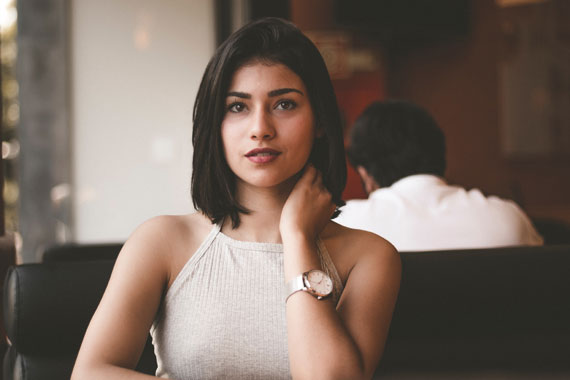Indoor portraits without a flash can be challenging, but it’s not impossible. Here are some tips that can help you capture stunning portraits indoors without the use of a flash:

Photo captured by Allef Vinicius
Leverage Natural Light: Use the natural light available from windows or doors. This can create a beautiful, soft light perfect for portraits. Position your subject close to these light sources, and experiment with different angles to see what looks best.
Use a Wide Aperture Lens: A wide aperture lens (like f/1.8 or f/1.4) allows more light to reach the camera’s sensor, which helps in low light situations. These lenses also create a shallow depth of field, providing that lovely blurry background (or bokeh) that can make your subject stand out.
Reflectors: Reflectors can help bounce light onto your subject, reducing harsh shadows and helping to evenly distribute light. If you don’t have a professional reflector, a white poster board or even a white wall can often do the trick.
Use a Higher ISO: Increasing your camera’s ISO setting will make it more sensitive to light, allowing you to shoot in lower light conditions. Try starting at ISO 400 – 800 as an example. Be aware, however, that a higher ISO can lead to more noise (graininess) in your photos. Modern cameras are quite good at handling noise at high ISOs, but it’s something to keep in mind.
Steady Your Camera: In low light conditions, you may need to use slower shutter speeds. To avoid camera shake at these slower speeds, hold your camera firmly, use a tripod or steady your camera on a stable surface.
Shoot in RAW: If your camera has the option, shooting in RAW format instead of JPEG will give you much more flexibility when it comes to post-processing. You’ll be able to adjust the exposure, white balance, and other aspects of the photo more easily without losing quality.
Posing and Composition: Since you’re not relying on a flash to freeze your subject’s motion, you’ll need to ensure they can stay relatively still. Use this to your advantage by coaching your subjects into poses that work well with stillness. Also, consider the composition rules such as the rule of thirds, leading lines, etc.
Editing Software: Utilize post-processing software like Topaz Photo AI or other noise reduction tools to enhance your photos after the shoot. This can help you remove noise from higher ISO speeds, and make other sharpening tweaks to improve your portraits.
Remember that practice is key. The more you experiment with different settings and lighting conditions, the more comfortable you’ll become with indoor portrait photography.
Like This Article?
Don't Miss The Next One!
Join over 100,000 photographers of all experience levels who receive our free photography tips and articles to stay current:






Leave a Reply